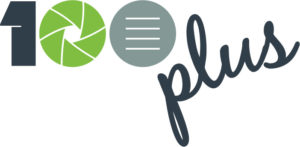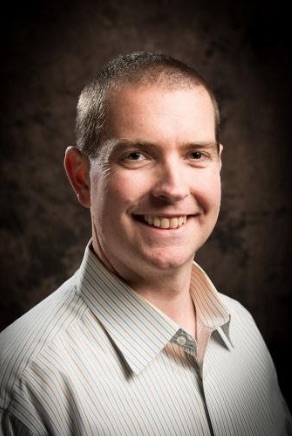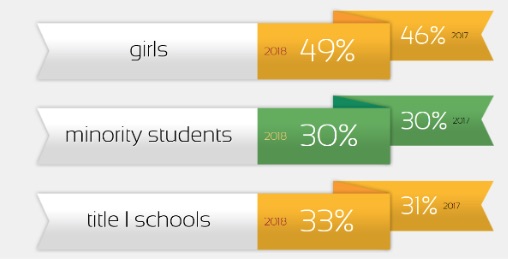Next week is Engineers Week, an annual celebration of the difference you make in our world. This year’s theme is Pioneers of Progress, and it’s an effort to raise awareness to inspire the next generation.
That’s where DiscoverE’s Future City Program comes in. It engages kids to create solutions that will make the world a better place.
To learn more about this student-driven, one-of-a-kind Engineers Week program, E100 talked with Dan Koval, corporate initiatives manager at Bentley Systems. Reflecting on a decade of involvement with Future City, Dan shares the positive impact it’s having on students across the U.S.
– Kathie Schoff, The Engineering 100

E100: Can you tell us about the Future City program?
DK: Future City engages more than 45,000 students a year throughout the U.S. and abroad and starts with the basic question: How can we make the world a better place? To answer it, 6th, 7th and 8th graders imagine, research, design and build cities of the future that showcase their solution to a city-wide sustainability issue. What I like most about the program is that it lets everyone come to the table to share what they are excited about and then gives them a chance to work together.

After four months of learning how to build a city, researching, designing and writing up their solution to a city-wide issue and building a scale model of their city, teams compete regionally. The winners are brought to D.C. to compete in the finals, which takes place during Engineers Week. After the competition is over, win or lose, students are more prepared to be citizens of today’s complex world and now have insight into the amount of input and perspective it takes to run a city.
E100: What makes the Future City program a Pioneer of Progress?
DK: The Future City program was around long before anyone even heard the word STEM. It was hands-on learning before hands-on was a thing. The creators were ahead of their time when they recognized the need to get students involved in the middle school years, a pivotal time when kids are trying to piece together what interests them. The program exposes students not only to engineering but also utilizes design, presentation and writing skills. It’s unique because it involves every facet of what students learn at school, from the arts and sciences to math and English, and at the same time, it replicates what it’s like to work on a project team in the real world.
There’s also a seat at the table for everyone in this self-directed program. You have artsy kids who can help with the design concept, math and engineering kids who want to think through how to address the big challenge and then you have others who are gifted communicators and can do the writeup on the project and explain it to others. No matter what your talent, there’s a place for you. It’s like a Venn diagram where everything and everyone intersects.
E100: What are some of the real-world issues the Future City program tries to address? What’s the competition about this year?
DK: Past Future City topics include stormwater management, urban agriculture, public spaces and green energy. The 2019-2020 theme is “Clean Water: Tap into Tomorrow.” The teams choose a threat to their city’s water supply, like a natural disaster or contamination, and design a resilient system to maintain a reliable supply of clean drinking water.
What students come to learn is that all these issues are multifaceted and there is so much more to think through than they initially suspect. One year, students were asked to create adaptable cities. At first students considered the elderly and how they would create environments for people as they age. But they soon realized that many people require adaptable environments, like moms of newborns with strollers or children with different abilities. Working through these issues, students eventually come to realize that the selected themes affect larger sections of the population than they initially imagined. The real challenge comes in when you start thinking about the city as a whole and not just one group of people. It enables students to see the connection of things outside of their smaller world.
E100: The Future City Program has been around for more than 25 years and Bentley’s been involved with the program almost since its inception. How has it changed over time?
DK: The Future City program has grown considerably in size and reach. It’s now about 45,000 participants from 40 regions in the U.S. and other countries. But, at its core, it’s the same basic competition. It was an optimal concept from the start and only gained in popularity as people started to look for methods to engage students in a hands-on way, so they could see what they were learning in school was of value to their future.
Bentley continues to be involved in many aspects of the competition, from sponsoring the final contest to supporting multiple regions around the U.S. My colleagues and I also volunteer as mentors and judges, and our leaders keynote at the final competition.
E100: Many corporations are now looking to build diverse and inclusive teams of engineers, getting more women and minorities into the field. Does the Future City program help address this?
Future City is accessible to every student, from the exceptional child to the gifted and talented. Female students, minority students and low-income students from Title 1 schools all participate at record levels. And teams can be as small as three people or as large at 30+, making it easy to participate no matter the size of your group.

The almost 100-page Future City guidebook also helps level the playing field. If you read it cover to cover, all the information you need is there, laid out step by step. You don’t need any special background or training to participate. Everyone is learning as they go along.
